The govea plant, also called hovea, is a palm tree that is very popular among flower growers. When grown indoors, it is unpretentious, thanks to which it is suitable for growing both experienced florists and beginners. All that is needed for the normal growth and development of a palm tree is warmth and sufficient light.
Content
Features of govea
They began to cultivate govea back in the Victorian era, while growing it on estates, decorating spacious halls, as well as in palaces. An interesting fact is that in nature such a plant is found only on Lord Howe Island, which belongs to Australia. This genus is considered part of the Palm family, and it unites only 2 species. Under natural conditions, the height of such a plant can reach 12-15 m. When grown in indoor conditions, the height of such a palm tree most often does not exceed three meters, but it also happens that in a spacious hall the plant grows up to five meters in height, but this is quite rare phenomenon.
This palm is single-stemmed, on its upper part a large number of stems are formed, on which there are large pinnately dissected leaf plates. Hoveya, cultivated in indoor conditions, while young, forms a large number of basal shoots. However, as she grows up, she forms a single powerful trunk. It is characterized by very slow growth, during the year only 2 or 3 new leaf plates grow in it. If such plants are properly cared for and provided with suitable conditions for growth, then it can live for several decades.
Home care hovei
Growing fasting at home is quite simple. She is one of the most unpretentious palms. Minor care errors will not be able to cause tangible harm to her. However, if you want a palm tree to grow very beautiful and lush, then you must take good care of it, and also provide optimal conditions for growth.
Illumination
When choosing a place for govea, it should be borne in mind that it can grow well both in shade and in direct sunlight. However, young bushes should be protected from the scorching rays of the sun.An adult palm tree can thrive in bright light, but the plant should not be exposed to direct sunlight for long periods of time.
Govea grows best in a place that is well lit, but the light must be diffused. The palm tree grows well on the northeastern, southeastern or northern windowsill. If desired, the plant can be placed in the back of the room, however, it is not recommended to place it in the shade, the fact is that, due to poor lighting, it will begin to wither. In summer, the palm tree can be taken out into the fresh air, but you should choose a place for it that will be well protected from the scorching rays of the sun.
Temperature regime
In the summertime, the palm tree grows best when it is warm (23 to 27 degrees). A palm tree can grow well in a warmer room, but in this case it should be systematically moistened with a sprayer and often ventilated. In the winter months, the plant has a dormant period, while at this time it should be at a temperature of 15 to 18 degrees.
Culture is not afraid of short frosts, as well as small frosts (up to minus 5 degrees), but only if the root system is well insulated. Otherwise, if the bush stays in the cold for 3 to 5 days, this will lead to its death. Abrupt changes in temperatures during the night and daytime to the plant also cannot do much harm. However, this should not be abused, it is better if the plant experiences as little stress as possible.
Air humidity
Govea grown in room conditions does not have special requirements for air humidity. Experts recommend moisturizing the crown of the palm tree on hot summer days. In the winter months, it is recommended to place it as far as possible from heating appliances. If the level of humidity is very low (less than 30%), then an open container filled with water should be placed near the hovei. If the plant is kept in a room with very dry air for a long time, then it may begin to dry out. If, however, excessively high humidity (more than 70%) is observed in the room for a long time, this can lead to the appearance of rot on the stem.
Watering
The palm tree needs regular abundant watering. Make sure that the top layer of the soil mixture in the container is slightly moist all the time. However, do not allow the liquid to stagnate in the root system, as this can lead to rot on the root system and stem.
In the summer, watering should be more frequent (4 to 6 times every 7 days). In winter, the bush is watered only after the top layer of the substrate in the pot has dried, but in no case do not allow the earthen coma to dry out. For irrigation, it is best to use water at room temperature, which should be well settled before that (it can be passed through a filter). Rain or melt water is perfect for this.
Fertilizer
Govea is fed only in the spring-summer period, for this they use a complex mineral fertilizer for indoor deciduous plants or for palms. Top dressing should be done once or twice a month. If desired, you can feed the plant through foliage, while doing this through watering. Experienced florists recommend alternating these methods. For foliar feeding, use a low concentration fertilizer solution. Before using the product for the first time, be sure to carefully study the instructions on the package.
Hovea transplant
While the palm is young, you need to replant it every year. As the root system grows, it is necessary to increase the size of the container. After she turns 5 years old, she can be transplanted once every 2–4 years. However, it should be borne in mind that the soil mixture is gradually depleted and over time it must be replaced with fresh nutrient. It is necessary to replant the palm in the spring, but if absolutely necessary, this can be done in the fall.
For transplanting, it is best to use a commercial potting soil mixture for indoor palms. If you wish, you can do it yourself, for this you need to combine leaf and sod soil, humus, river sand and peat in a ratio of 2: 2: 1: 1: 1. To enrich the substrate, it is recommended to add a small amount of wood ash and bark to it. Do not forget to first make a drainage layer at the bottom of the pot before planting, for this use rubble, ceramic shards, brick chips or expanded clay.
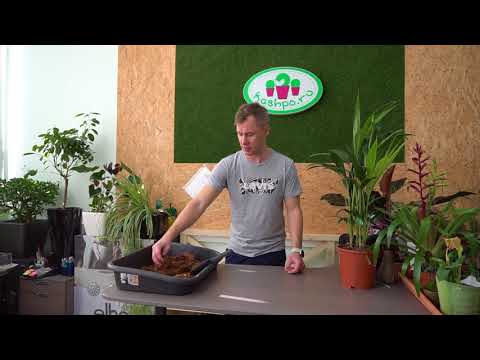

Watch this video on YouTube
Reproduction methods
Growing from seeds
Govea can be propagated by seed and dividing the bush. However, it is almost impossible to get seeds from hovea, because it does not bloom in indoor conditions. However, if desired, seed material can be purchased at the store, but it must be borne in mind that their germination rate will not exceed 50 percent. If you still manage to get seedlings, then they will become beautiful palm trees only after 2 or 3 years.
Dividing the bush
In the process of transplanting, if necessary, cut off the young shoot from the trunk and plant it in a soil mixture consisting of sand and peat. However, be prepared for the cutting not to take root. If it does give roots, then it will be possible to plant it in a permanent pot with nutritious soil only after 2-3 months.
The easiest option is to purchase a new palm tree from the nursery.
Diseases and pests
Mites, thrips and scale insects can settle on hovei, and in rare cases mealybugs. If liquid stagnates in the soil mixture, then because of this, the plant can be affected by gray or black rot. Both diseases and pests can be eliminated with the help of special preparations sold in specialized stores.
In order to prevent the appearance of pests, it is necessary to systematically examine the bush, special attention should be paid to the seamy surface of the leaf plates. Also regularly carefully inspect the surface of the substrate, if a gray or white bloom has formed on it, this may be due to the fact that mealybugs have settled in the soil mixture or a fungus has appeared.
Possible problems
- If brown or yellow spots appear on the foliage, this may be due to an excessively low level of air humidity, or it may be sunburn.
- Twisting the tips of the sheet plates may be due to very low air temperatures or exposure to a draft.
- Drooping leaves say that there is stagnation of fluid in the root system.
- Plaque white it is formed on foliage if pests have settled on the bush.
- Withering and flying around the lower leaf plates most often due to the fact that the palm tree lacks nutrients.
- Very slow growth and faded foliage is a sign of very poor lighting.
Types of hovea
Hovea differs from other representatives of the Palm family not only in that in nature it can be found only on one island, but also in that it has very few varieties. In many regions with warm and mild climates, this palm is grown outdoors and successfully propagated artificially. However, in regions with colder climates, it is cultivated exclusively in indoor conditions.
You can decorate your home with any of two types of govea:
Howea belmoreana
A palm tree growing in nature can have a height of 10 to 12 m (sometimes even higher). Dark green, beautifully curved leaf blades can reach from 2 to 2.5 m in length. On the surface of the trunk expanding downwards, each of the dead leaf blades leaves a ring mark. The lush crown has an emerald hue. When grown indoors, this palm tree differs from the wild one only in height, so it can grow up to 2–2.5 m.
Howea forsteriana
This species differs from the previous one in that it is taller.Under natural conditions, such a plant can reach a height of 13 to 15 m. In the upper part of the straight trunk, long petioles are formed, on which large leaf plates of a pinnately dissected shape grow, and they are painted bright green. In adult palms, the length of the leaf plates can reach four meters. When grown indoors, the height of the bush can be up to 3–3.5 m.
Home-grown hovea does not bloom. And only a palm tree, grown in the open field or in a greenhouse, blooms.
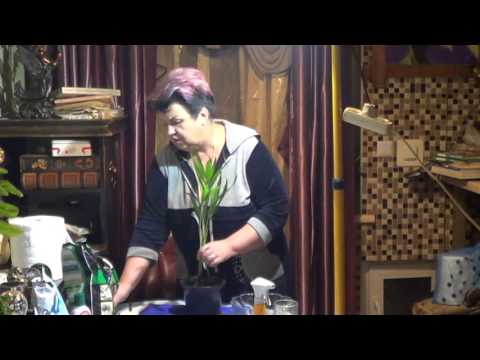

Watch this video on YouTube

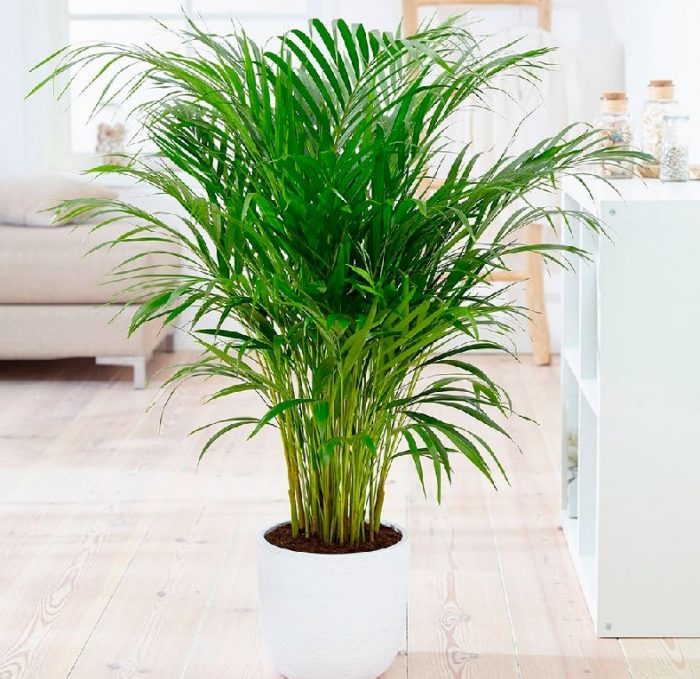
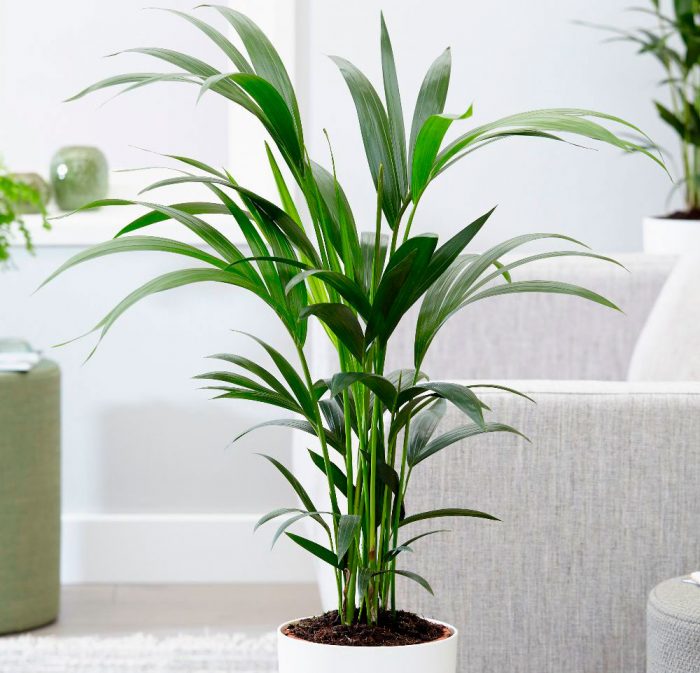
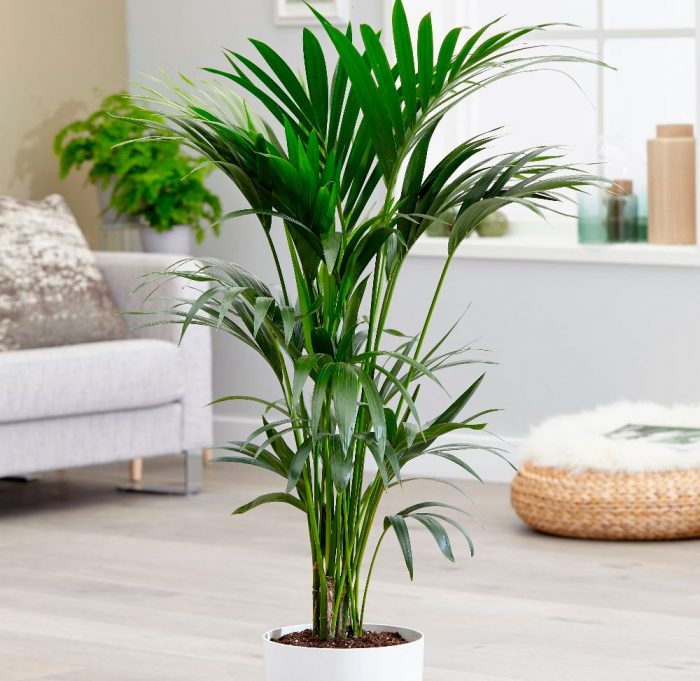
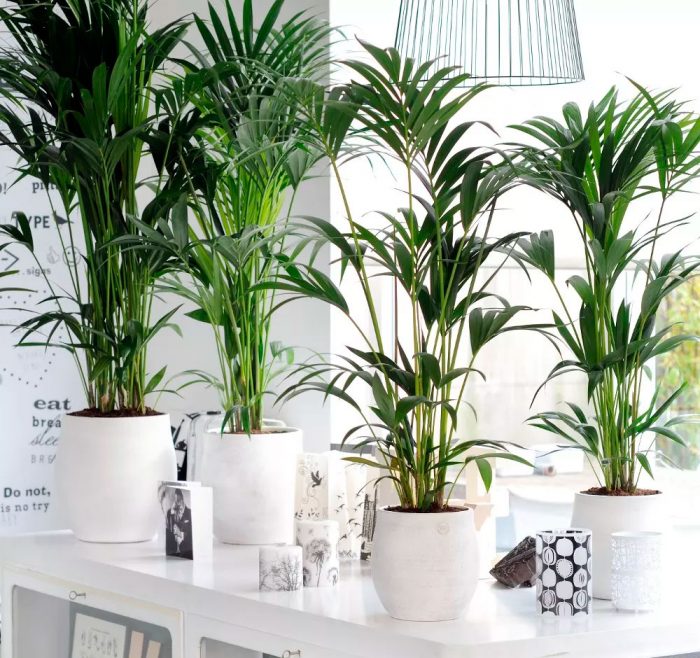
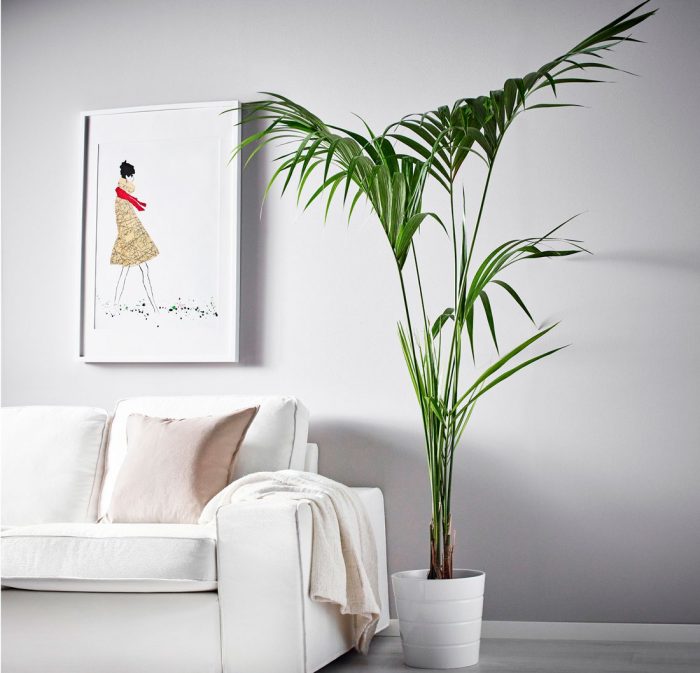
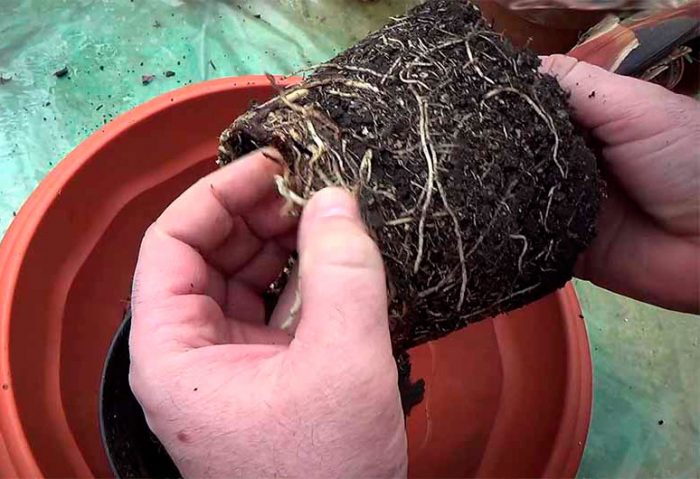
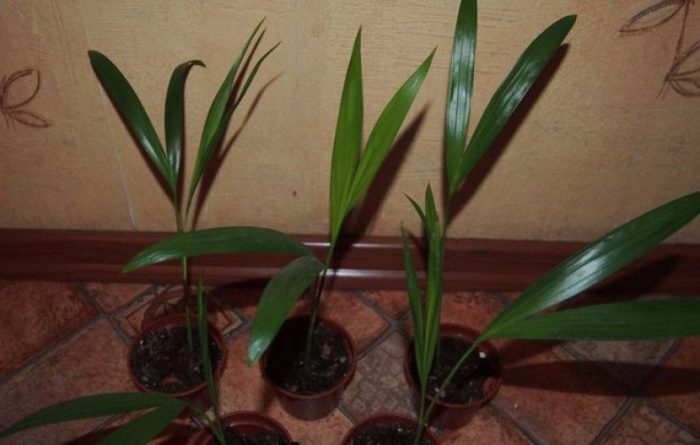
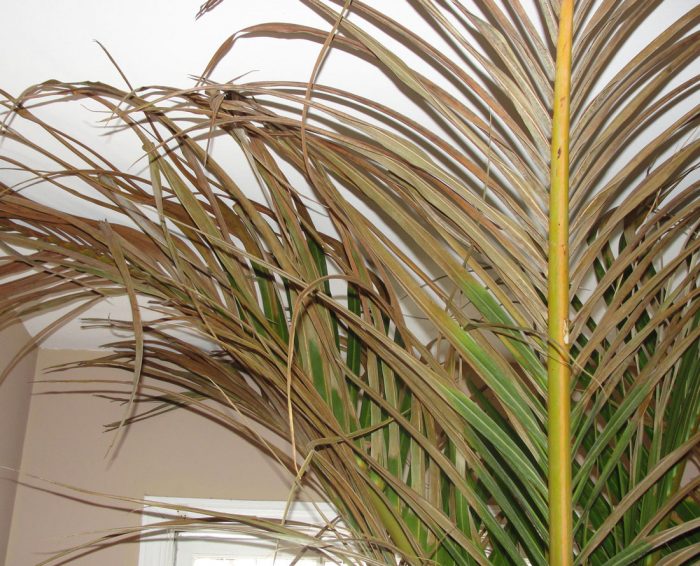
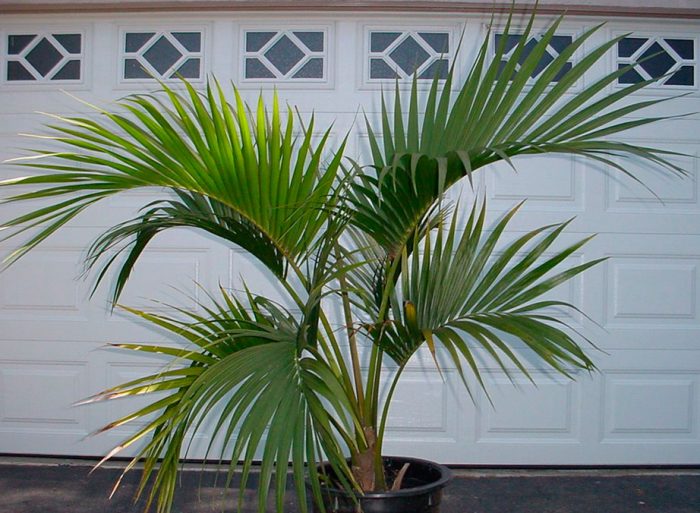
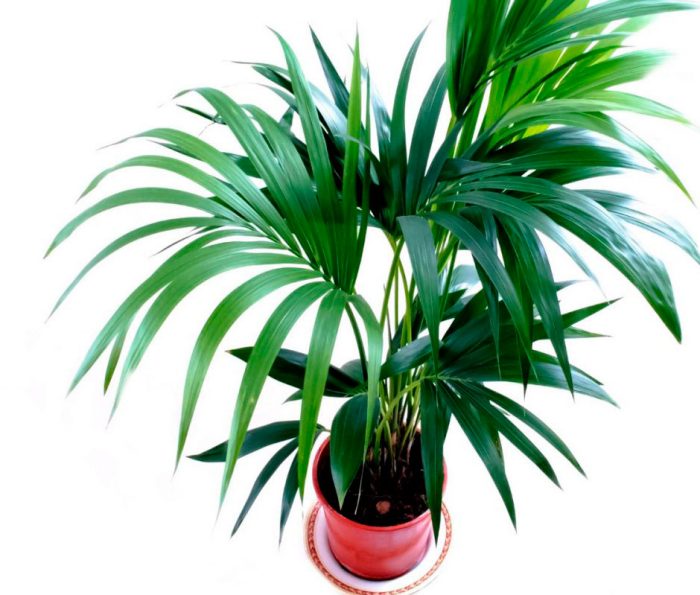
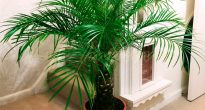

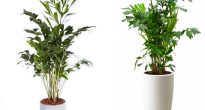
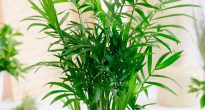

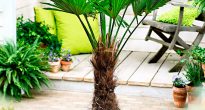




Nice, comprehensive article.
It would be nice if you could write in more detail about the treatment of various diseases.